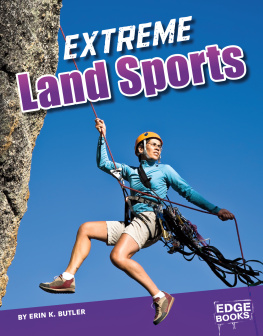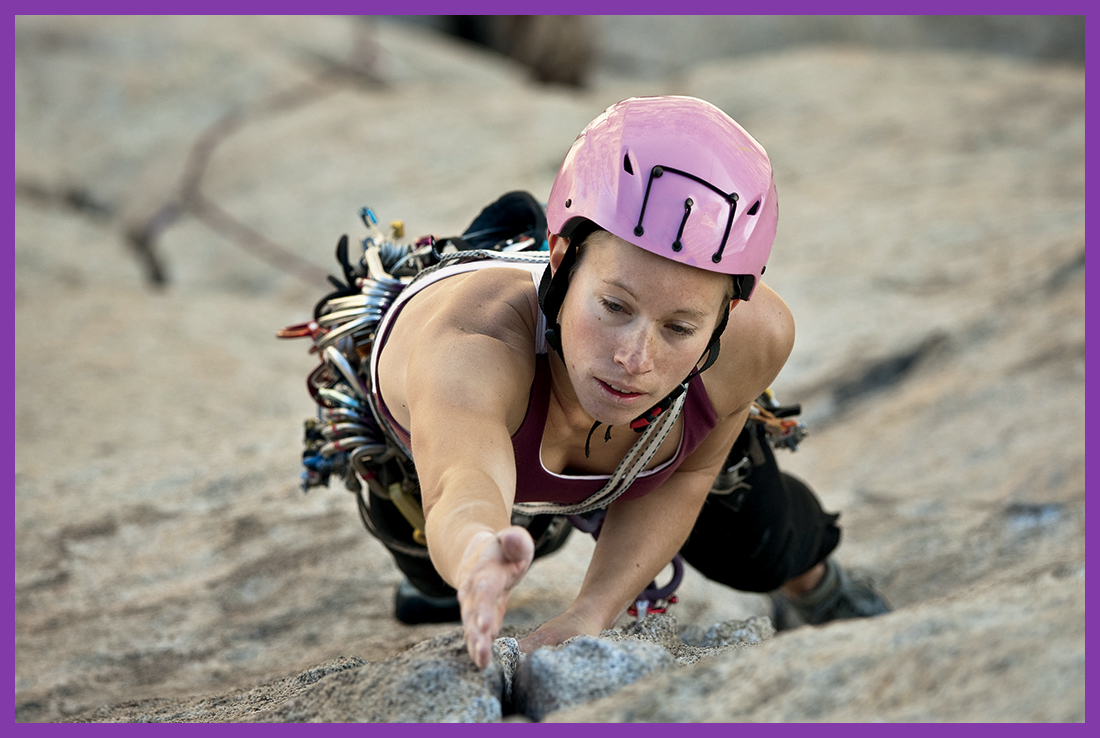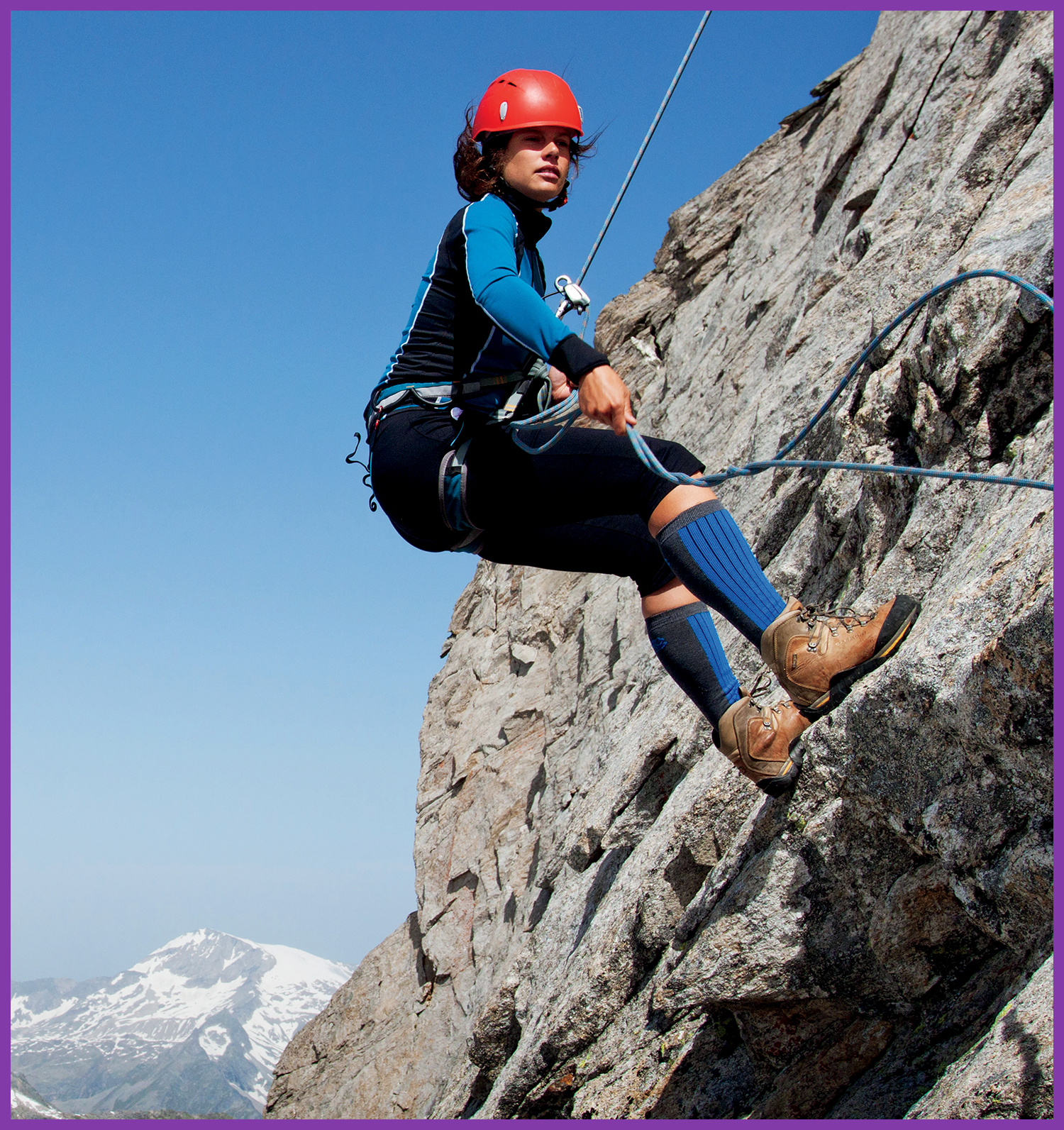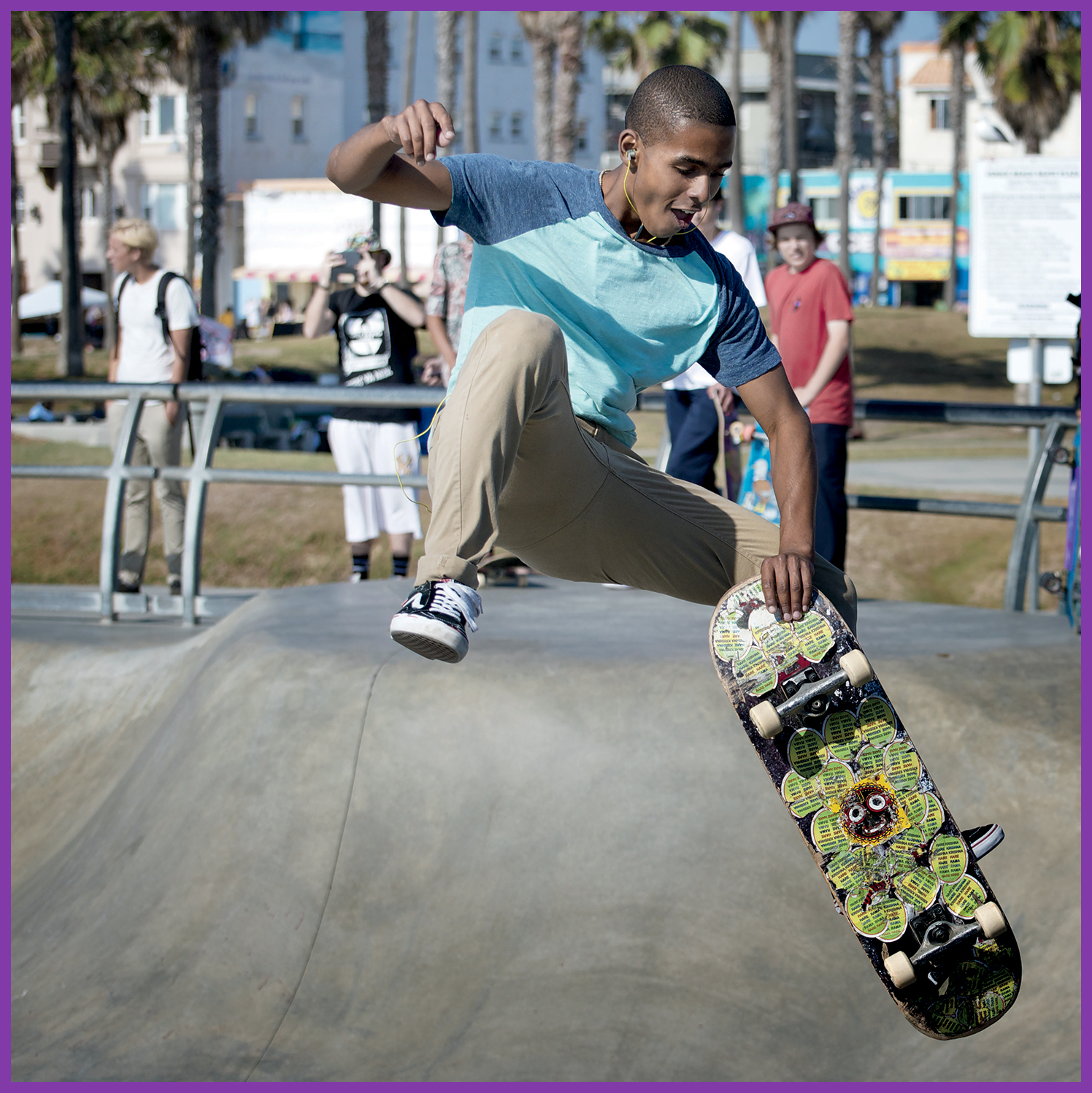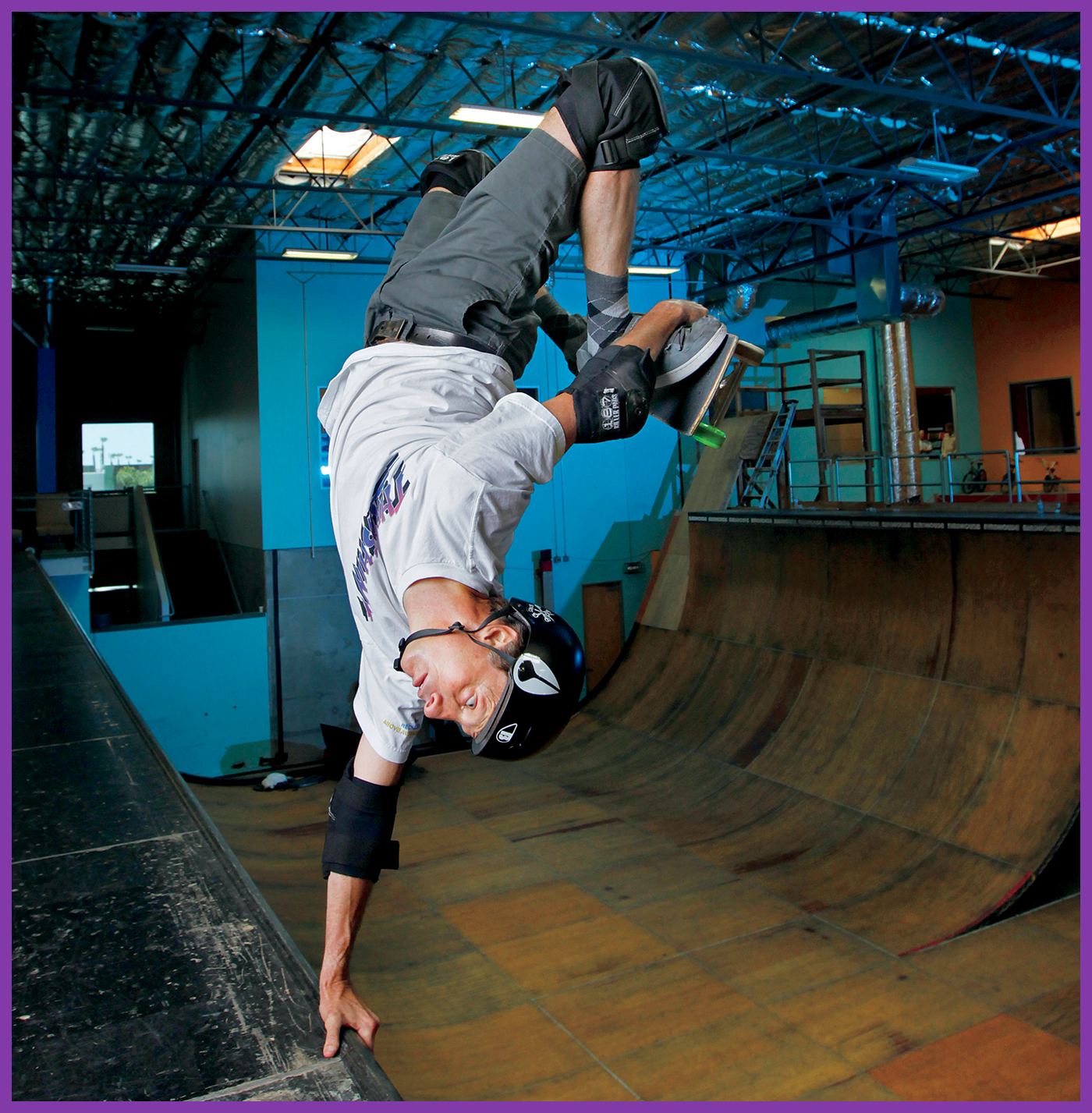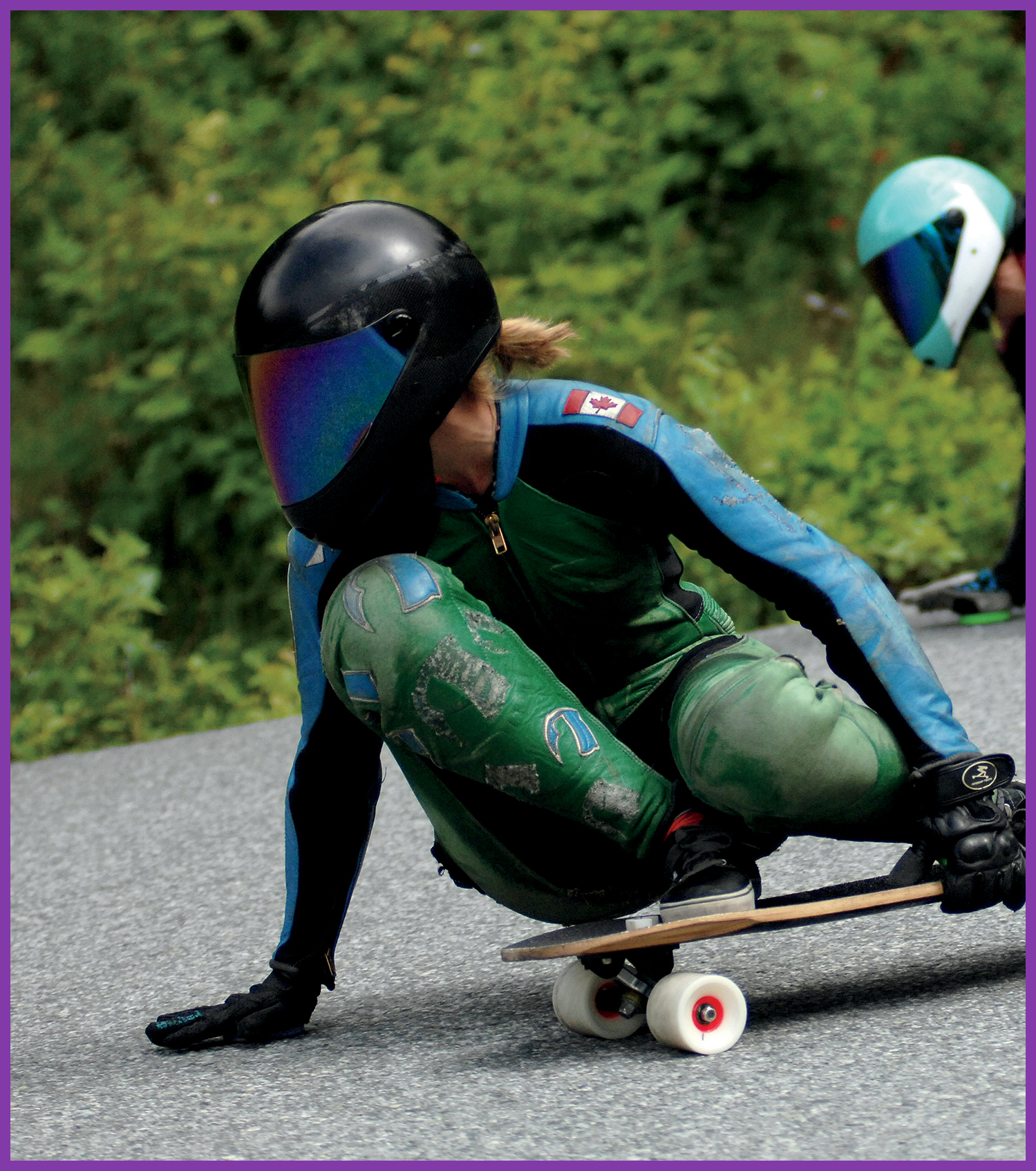READ MORE
- Adamson, Thomas K.Big Air Skateboarding. Extreme Sports. Minnetonka, Minn.: Bellwether Media, 2014.
- Hamilton, John.Inline Skating. Action Sports. Minneapolis: A&D Xtreme, 2014.
- Jackson, Demi.Parkour. Daredevil Sports. New York City: Gareth Steven Publishing, 2015.
- Turnbull, Stephanie.Rock Climbing. Adventure Sports. Mankato, Minn.: Smart Apple Media, 2016.
CHAPTER 1
Rock Climbing
One of the most thrilling extreme land sports is rock climbing. This sport involves climbing over rocks, boulders, and other obstacles to reach a . Long ago, this sport was simply a dangerous part of traveling. Climbing rocks was often necessary to get from one place to another. Over time, people began to enjoy climbing for fun.
But rock climbing comes with many risks, thanks to one unstoppable force gravity. If climbers fall, they can be seriously hurt. Climbers love to face this risk and overcome danger.
Some people climb indoors on specially built rock walls. Others climb outside on natural rocks and mountains. Most of the time, people use a rope and harness for safety.
There are different methods climbers can use. Beginners use top-roping, which involves climbing with a partner. Lead/sport climbing focuses on the technique, not just the destination. Traditional climbers develop their own routes based on cracks in the rocks. Bouldering is a type of climbing done closer to the ground, and does not use a rope.
Rock climbers try to travel light, but they need to bring all their equipment with them as they climb.
CHAPTER 2
Abseiling
Getting from a high point to a low point is a useful skill for many extreme sports, such as mountain climbing and snowboarding. Abseiling, also called rappelling, grew out of that need. As people continued developing abseiling techniques, it became a sport of its own.
In order to abseil, you need a rope, an anchor, and a harness. A good rope, one that can hold the abseilers weight, is the most essential part of climbing safety. The anchor is carefully attached to a high point. This could be the top of a cliff, a wall, or another vertical surface. Then the abseiler loops the rope through a , bouncing off the wall with his or her feet while traveling toward the ground.
Once someone has become an experienced abseiler, he or she can begin using new techniques. This could mean abseiling headfirst, upside down, or even without a harness. Some extreme abseilers also try to descend as quickly as they can, adding an extra level of excitement and danger. The world record for a 328-foot (100-meter) abseil is 8.99 seconds.
In addition to other safety gear, abseilers always wear helmets in case of falling rocks.
CHAPTER 3
Skateboarding
The earliest skateboards were used as far back as the early 1900s. People began experimenting at home by attaching wheels to boards. Then, around the 1960s, companies began to sell skateboards. Easy access to professionally made boards allowed the sport to become much more popular.
Skateboarding can be either a team sport or an individual sport. At its most basic level, skateboarding is simply a way to travel from one place to another. Riders stand on a wheeled board that is 28 to 32 inches (71 to 81 centimeters) long, and push themselves along using one foot. But when skateboarding goes extreme, it can be truly death-defying. Extreme skateboarding involves riders performing tricks, spins, and jumps. Riders are always thinking of new, creative ways to use their boards.
There are two main types of extreme skateboarding vertical and street-style. Vertical, or vert, skateboarding is when riders skate on a half-pipe. A half-pipe is a ramp shaped like the letter U. By using these ramps, skaters can fly into the air on their boards and perform tricks. In street-style skating, riders perform tricks on stairs, rails, and other obstacles.
At skate parks like those in Venice Beach, California, skateboarders get to practice tricks and show off their moves. They also learn from other boarders.
Skateboarders can show off their skills in competitions. The most famous are the X Games and World Cup Skateboarding. Skateboarders from all over the world travel to perform their best stunts. One of the all-time best skateboarders is Tony Hawk, who has won more than 70 skateboarding competitions.
The X Games showcases both summer and winter sports, including bicycle motocross (BMX), motocross, snowboarding, and, of course, skateboarding. Both men and women can compete in street, vert, and park events. Since the X Games moves to different locations around the world, skateboarders get to show off in new environments.
World Cup Skateboarding was developed in 1993 and the first competition was held a year later. This world tour focuses on professional skateboarders. Today World Cup Skateboarding has more than 10 events. Just like in the X Games, both men and women can compete.
Tony Hawk competed in pro skateboarding for 17 years. He retired after performing a 900-degree turn in the X Games.
EXTREME FACT!
There are more than 3,000 skate parks in the United States.
One special branch of skateboarding is called longboarding. A longboard is exactly what it sounds like a longer version of a skateboard. Longboards are typically at least 36 inches (91 cm) long, but some are as long as 60 inches (152 cm). They can also be wider than regular skateboards.
Longboards are generally easier to ride than skateboards. Their length allows riders to balance more easily. Unlike skateboards, longboards are designed for long-distance travel.
There are four main styles of riding a longboard: cruising, slalom, freeride, and downhill. Cruising is simply used for transportation. The other types are more extreme. Slalom requires riders to travel in between and around obstacles. Freeride is the most creative type, with riders performing tricks such as kickflips, cross steps, and tiger claws. The most extreme type is downhill, which brings riders to high speeds. The world record for downhill speed on a longboard is 80 miles (130 kilometers) per hour.
British Columbias Britannia Classic features a freeride and race for longboarders competing in Canada.

